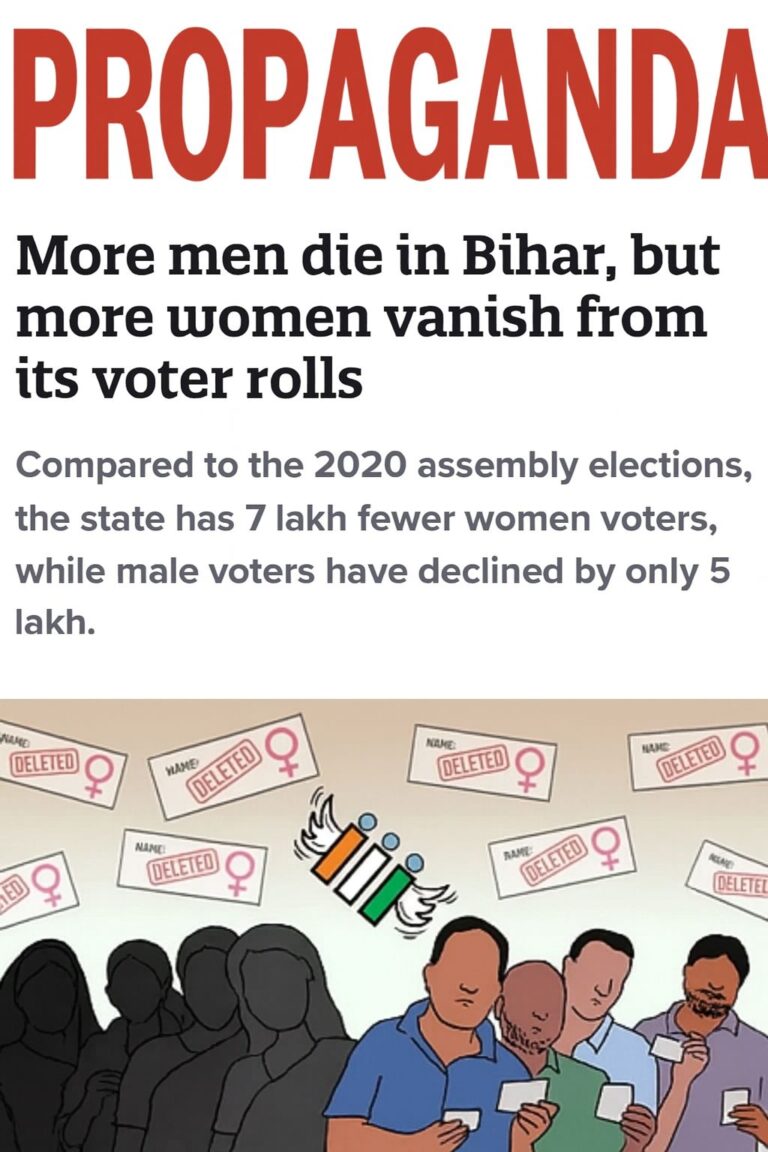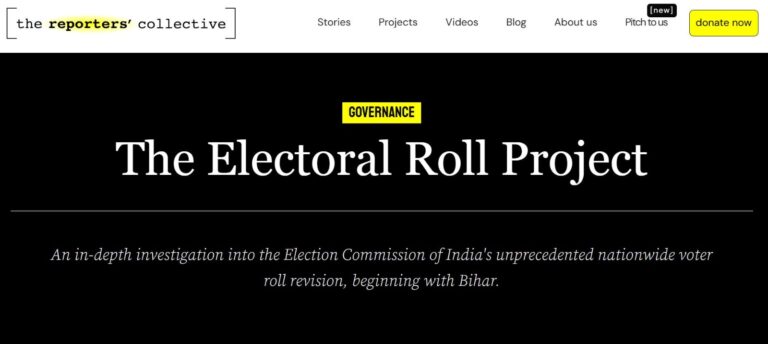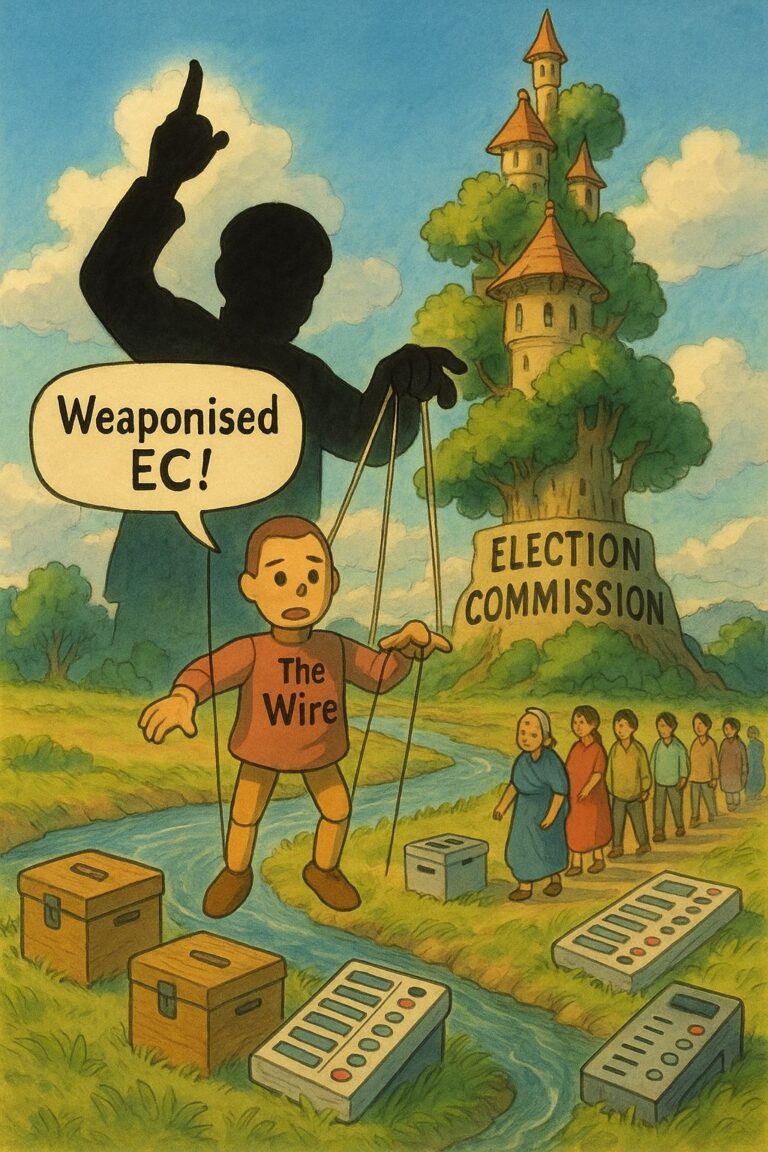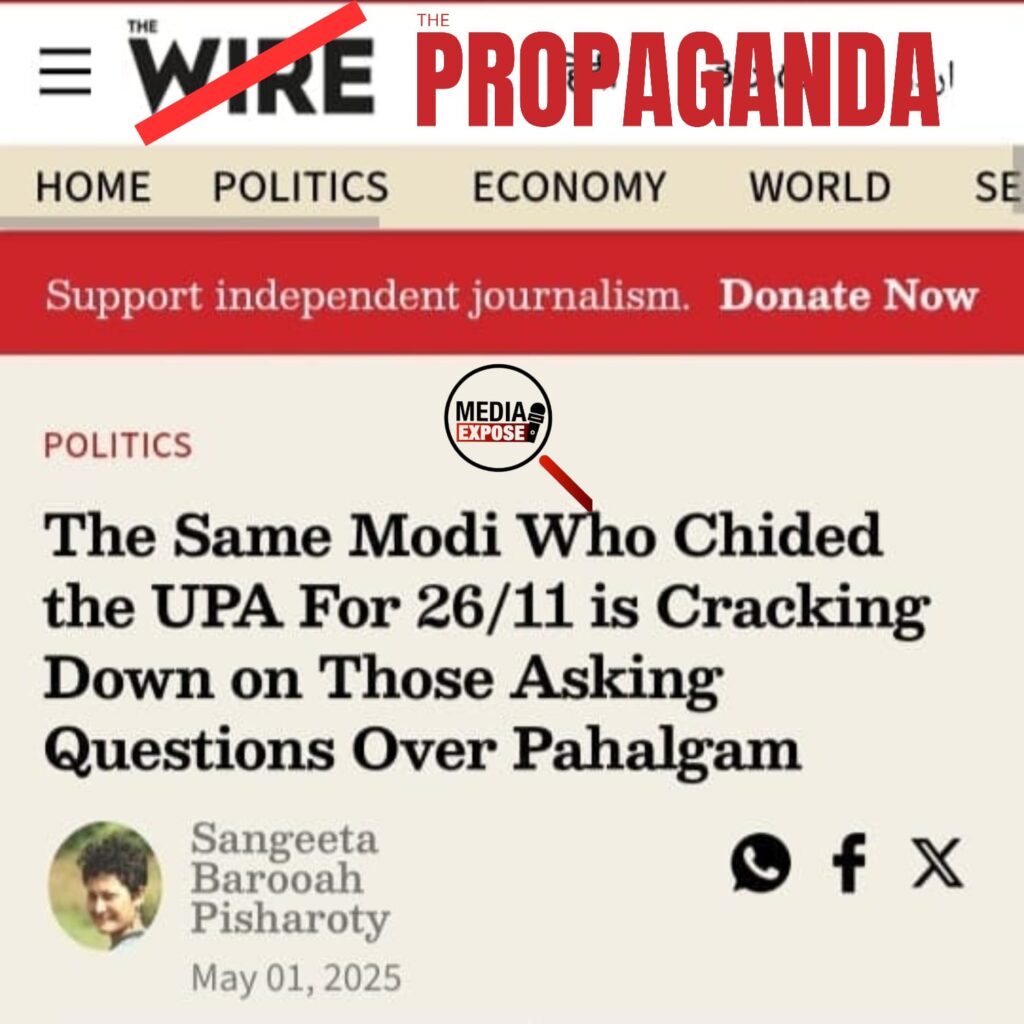
In the echo chambers of elite media, Sangeeta Barooah Pisharoty has found her pulpit, sermonising endlessly against the Modi government while wilfully ignoring the strides India has made—particularly in the Northeast, the region she ironically hails from. Her work, draped in the veneer of moral journalism, reeks of one-sidedness, selective amnesia, and habitual disdain for anything that doesn’t align with her anti-BJP worldview.
Her most recent performance—“I Have Small Eyes, Mr Prime Minister”—is not journalism. It is a piece of manufactured victimhood served with the usual masala of Modi-hatred. Prime Minister Narendra Modi’s call to prefer Indian-made Ganpati idols over Chinese ones—a push for Aatmanirbhar Bharat—was twisted by her into an accusation of racial insensitivity. In a country trying to strengthen its economic sovereignty, she reduced a nationalistic economic appeal into a race-baiting exercise. This isn’t bold journalism—it’s intellectual sabotage.
A Career Built on Modi Derangement Syndrome
Pisharoty’s writing is a well-documented exercise in agenda-driven activism. Her record speaks volumes. Her article “Modi Chided UPA on 26/11 Crackdown, Questions on Pahalgam” tried to pin the blame for a terror attack on the Modi government simply because a promotional video about Kashmir was running parallel. That’s her strategy: wedge outrage into any crevice possible, facts be damned.
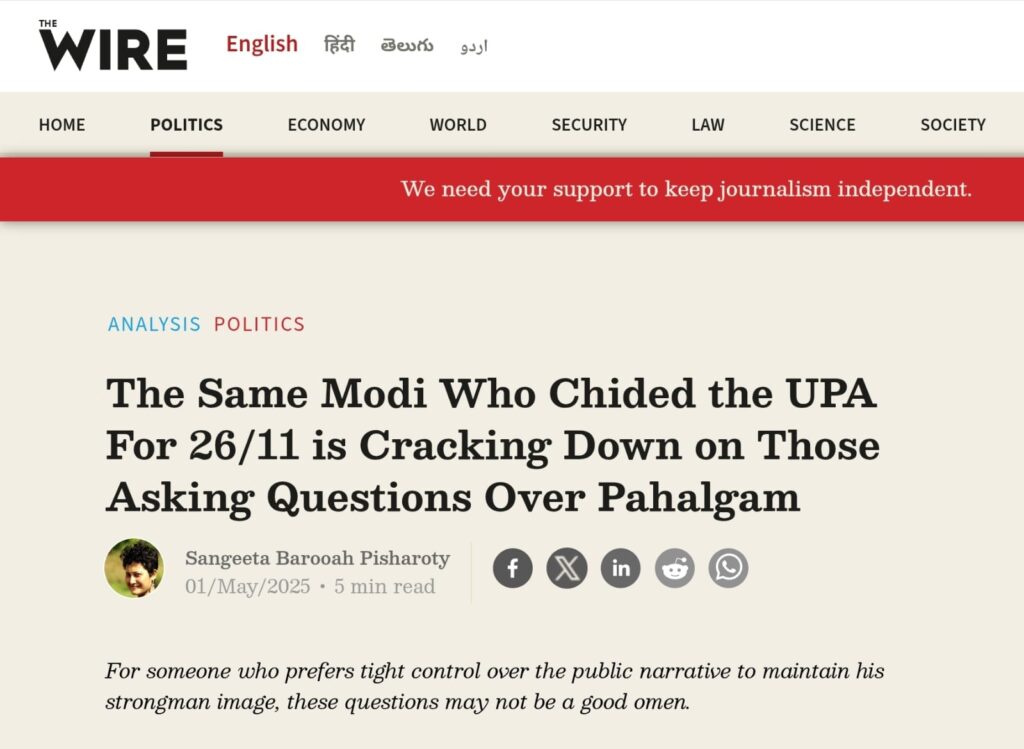
In “Behind Modi’s Diwali Ad for Soldiers, an App for Political Messaging,” she mocked a heartfelt initiative that allowed citizens to send messages of gratitude to jawans stationed at borders. Rather than salute this connection between civilians and the armed forces, she insinuated it was political branding. In a 1,200-word piece, not one sentence acknowledged the soldier’s sacrifice. That omission is not accidental—it is central to her style: erase patriotism, question every national initiative, and attribute every action to sinister motives.
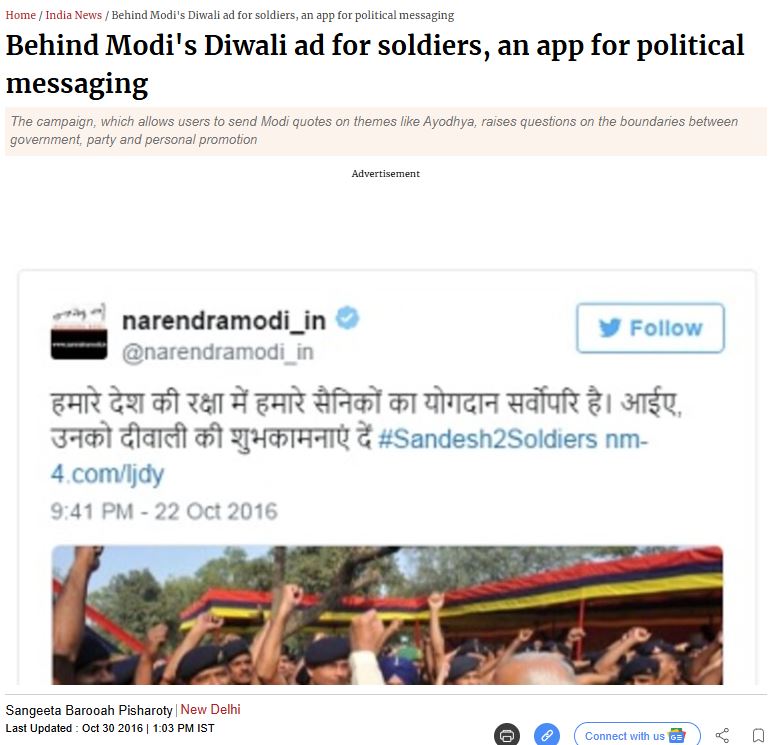
Wilful Blindness to Northeast Development
As someone from Assam, her refusal to acknowledge the transformation of the Northeast under Modi is not just strange—it’s shameful. Over 60 visits by PM Modi to the region. Twelve peace accords. Tens of thousands of insurgents surrendering. Infrastructure marvels like the Dhola-Sadiya Bridge, Bogibeel Bridge, and the Sela Tunnel. A semiconductor plant in Assam—ushering in technological self-reliance. But for Pisharoty, none of these developments deserve a headline unless they can be spun into a critique.
Take the article “Modi Govt Honouring Upen Brahma Not Politicised: Dipen Boro.” Even here, her framing implies that the honour is somehow suspect, as though recognizing the Bodo icon is an act of political manipulation rather than national reconciliation. It’s clear: even when the government does something objectively positive, she searches for a hook to pull it down.

Her coverage of Manipur is another case study. Articles like “Manipur: Biren Singh Resignation, BJP, Modi, Shah”, and “Manipur Governor Ajay Bhalla, Narendra Modi, Biren Singh” do not seek to understand the complexity of ethnic conflict, insurgency, or cross-border influences. Instead, they offer a lazy shortcut—blame Modi, Shah, and the BJP. No solutions, no insights, just slogans and scorn.

A One-Woman Outrage Industry
Let’s call it what it is: Pisharoty has monetized Modi-hatred. In an environment where virality depends on perpetual indignation, she has made herself useful to platforms like The Wire, whose editorial bias is already known. She is not a journalist in the traditional sense—she is a narrative enforcer. She picks themes not to enlighten but to inflame, not to report but to rile up the usual cabal of urban elites still grieving the political irrelevance of their preferred parties.
While India makes strides on global fronts—from G20 diplomacy to indigenous tech manufacturing—Pisharoty digs deeper into the trenches of grievance journalism. Her silence on the positives is not just bias—it’s betrayal. The very region she is from, whose story she could tell with authenticity, she has abandoned in favour of ideological warfare.
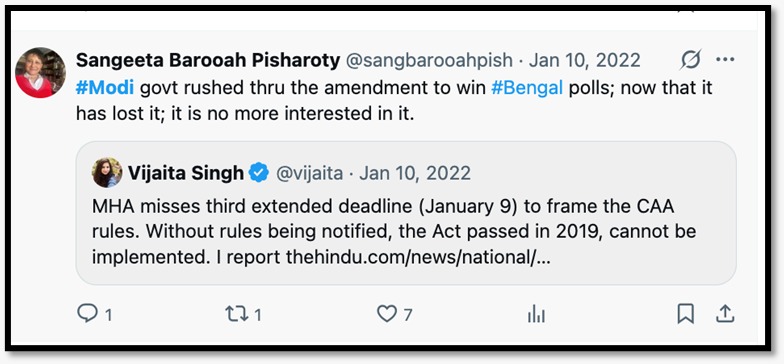


The Northeast Deserved a Voice—She Chose to Be an Echo
Sangeeta had the rare opportunity to be a bridge—between Delhi’s policy corridors and the rich, complex realities of the Northeast. She could have reported on the aftermath of peace accords, documented the transition of former militants, highlighted the digital and economic gaps that remain. Instead, she chose to be just another foot soldier in the Delhi-based media’s war against anything remotely nationalist.
She wasn’t silenced. She was spotlighted. And yet, she chose to squander that voice on petty provocations and rhetorical gimmicks. For someone who claims to represent the marginalised, she has managed only to marginalize her own region from the national discourse by turning every development into a narrative of victimhood and conspiracy.

Final Word: Journalism or Jihad Against the State?
Sangeeta Barooah Pisharoty’s brand of journalism is not accidental—it’s ideological. Her problem isn’t just with Modi. It is with the idea of a confident, unapologetic India that doesn’t seek validation from the West or its media darlings. Her writing exudes the belief that anything pro-India must be propaganda, while anything anti-India must be truth.
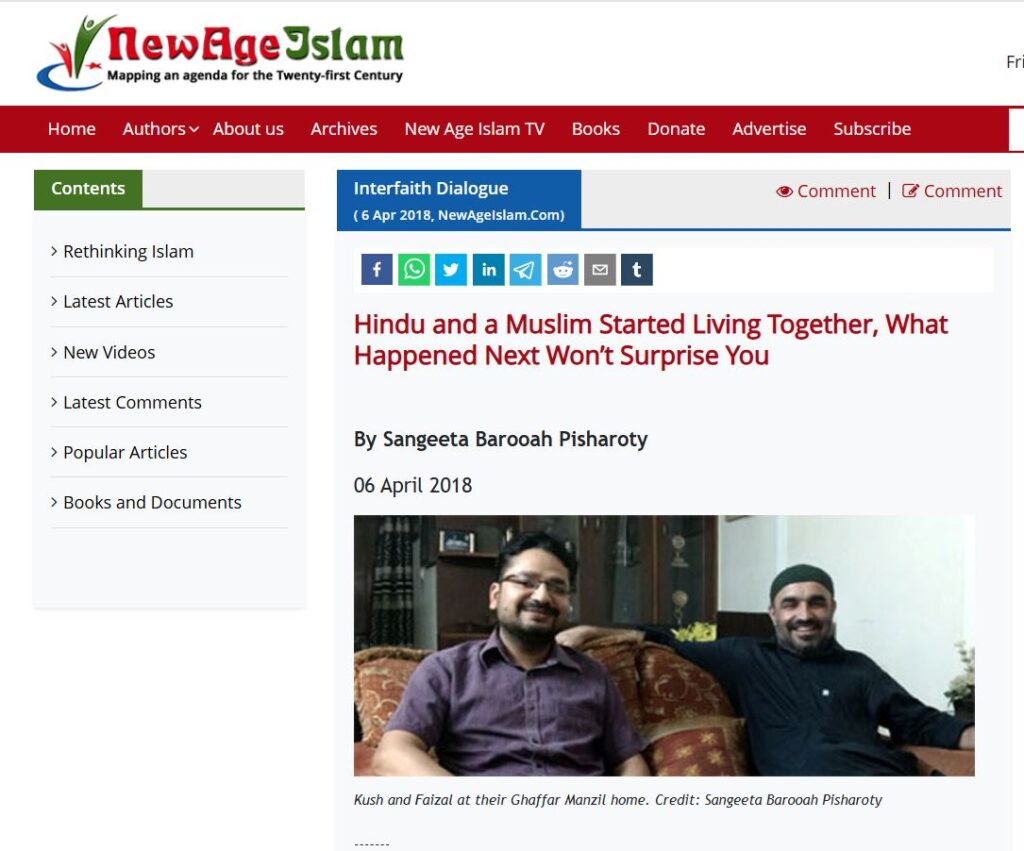
This isn’t journalism. It’s information warfare. And in that war, her target isn’t just Narendra Modi. It’s India’s morale, progress, and unity.
Her curry of outrage may be spicy. But it’s rotten at the core—and readers deserve better than another reheated plate of recycled disdain.
Author : Sandeep Gandotra, is a serial entrepreneur, startup founder, social media influencer and political analyst with 25 years of overall experience. Tweets at Sandeep Gandotra

